Chevy 454 Engine Guide

Meet Zach
Zach is a founder of 8020 Media and experienced automotive writer with 400+ articles written over his career. While he has a passion for sharing automotive knowledge with the world he also has more than a decade of hands-on experience modifying and maintaining a wide range of cars. His experience and technical knowledge lead to high-quality and well-researched content spanning classics to modern day muscle cars.
The Chevrolet 454 big block was introduced in 1970 and is still available today as a crate engine. It’s best known for its use in the 1970-1974 Corvette, but it’s also popular in the Caprice, Chevelle, and El Camino of the same era. With over 50 years of history to unpack, the Chevy 454 7.4L V8 is an exciting engine that also offers tons of potential. In this guide, we discuss Chevy 454 engine specs, performance, reliability, upgrades, and more.
*Our primary focus in this article is the original 454 big block engine from 1970-1976. However, even the modern 454 HO crate engine shares the same general design. As such, we will briefly discuss the various 454 ci engines from 1970 up to the modern crate engine.
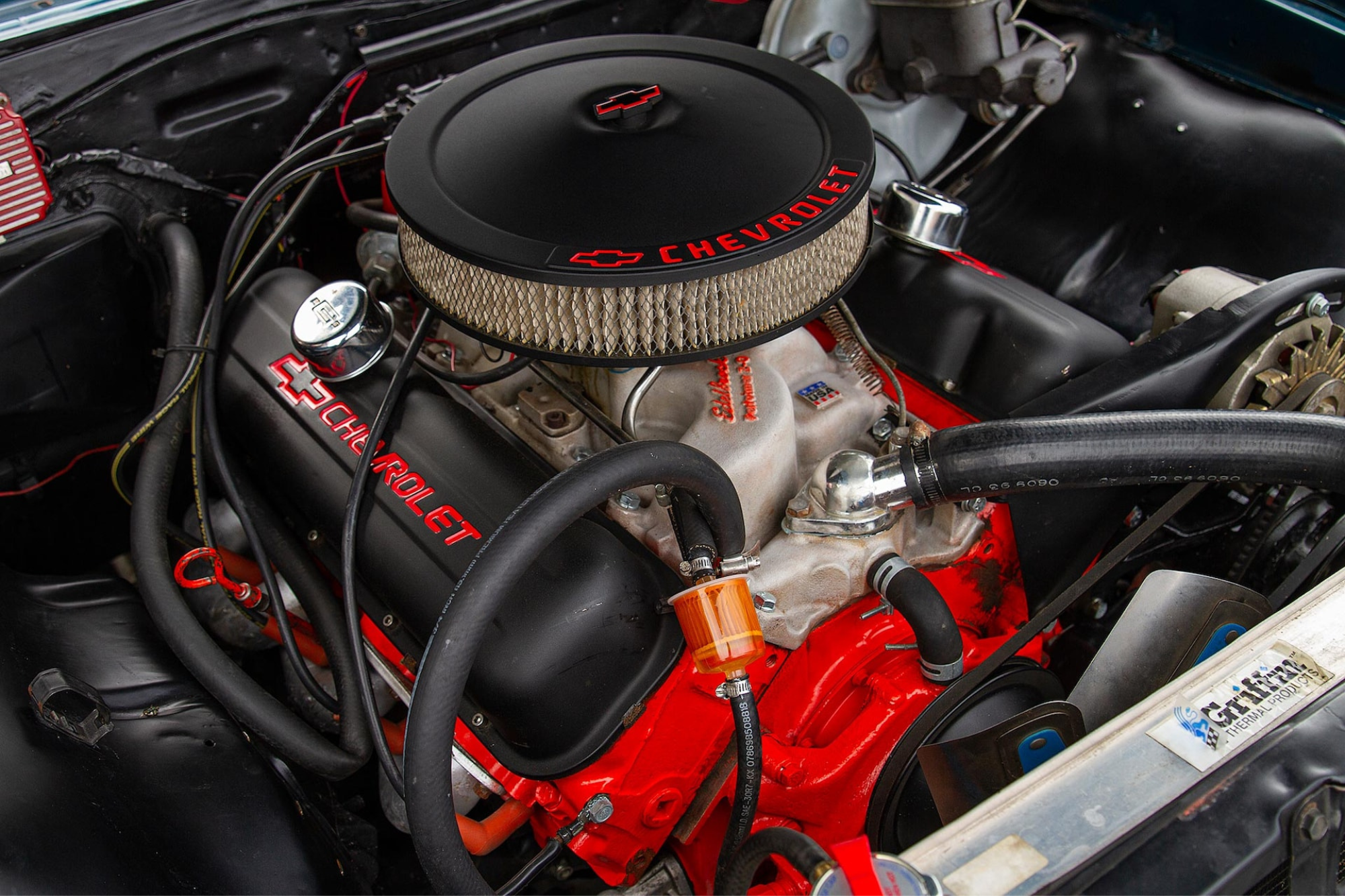
What Cars Use the 454 Big Block V8?
Original 1970-1976 Chevrolet 454 engines are in the following years and models:
- 1970-1974 Chevy Corvette
- 1970-1975 Chevy Chevelle
- 1970-1975 Chevy El Camino
- 1970-1975 Chevy Monte Carlo
- 1970-1976 Chevy Caprice
- 1971-1972 GMC Sprint
The Chevy big block is also popular in the 1990-1993 Chevy 454 SS truck. This later version of the engine is the L19 and features electronic fuel injection (EFI). Chevy 7.4L big blocks made their way back around in the mid to late 1990’s in the form of the Vortec 7400. Again, our primary focus is the original 454 but we’ll circle back to the later variants including the currently available crate engine.
Chevy 454 Engine Specs
Specs for the 1970-1976 big block 454 cid engine are as follows:
Engine: Chevrolet 454 Big Block
Displacement: 454 cid (7.4L)
Block/Heads: Cast Iron
Configuration: 90° V8
Bore x Stroke: 4.25″ x 4.0″
Compression Ratio: 10.25:1, 11.25:1, 8.2:1
Firing Order: 1-8-4-3-6-5-7-2
Engine Weight: ~685 lbs
Max Horsepower: 450 hp @ 5600 rpm
Max Torque: 500 lb-ft @ 3400 rpm
The 454 engine is also known as the Mark IV or Mark IV Rat Motor. It was Chevrolet’s second big block production motor following the Mark I W-series from the late 50’s to mid-60’s. As the name suggests, the Chevy 454 big block V8 delivers a 454 cid displacement – or 7.4 liters. The block and heads are cast iron which delivers great strength, but also makes for a nearly 700 pound engine.
Newer variants of the 454 use aluminum heads but share the same cast iron block. They also share the exact same displacement and bore x stroke of 4.25″ x 4.0″. Firing order for the Chevy 454 is 1-8-4-3-6-5-7-2.
Early versions of the 7.4L V8 were able to deliver 360-450 horsepower and 500 lb-ft of torque. The Chevrolet Corvette with the LS5 version delivered 390hp. Meanwhile, the LS6 in the Chevelle could deliver up to 450hp with the 4 barrel carb. However, power ratings rapidly declined throughout the 1970’s due to lower compression, emissions laws, and SAE power measurements. We covered these topics in-depth in our Buick 455 engine guide, so check it out if you want to learn more.
Chevy 454 Big Block Variants
Chevrolet 454 engines never really disappeared since 1970. It’s certainly best known for its stretch in muscle cars of the early 70’s. However, it was also used in Chevy and GMC trucks from 1973-1991. In ’79, GM got rid of the 454 option in the half-ton trucks but continued using it for heavy-duty truck applications.
The engine was much the same up until 1987 when Chevy added EFI. Anyway, the point is that the Chevy 454 has been a prominent engine since its intro in 1970. In the next sections we’ll discuss a few of the primary variants of the 7.4L big block V8.
Original 454 LS Versions
GM LS engines are without question some of the most popular V8 engines. It’s hard to go a day in the automotive world without hearing the comment, “just LS swap it.” The LS small block engine family didn’t come around until 1997, but Chevy was using the LS designation long before then. As such, the older 454 LS engines are not to be mistaken with the common LS engine family.
Chevrolet 454 big blocks were either LS4, LS5 or LS6 engines. The LS6 was the more powerful variant but it was quickly phased out following 1971. LS4 and LS5 versions became the only production engine available in Chevy or GM vehicles. However, Chevy did also offer a 454 crate engine known as the LS7.
Chevy 454 L19
The first major update to the Chevrolet 7.4L big block engine came in 1987 with the switch to EFI. These engines were dubbed the L19 and were in a number of Chevy and GMC C/K trucks. It also made it’s way into the popular 1990-1993 Chevy 454 SS. In the SS, the 454 ci motor made 230 horsepower and 385 lb-ft of torque.
Chevrolet Vortec 7400
Following the L19 variant, Chevy came out with the Vortec 7400 in 1996. As with all these variants, it’s the same 454 cubic inch (7.4L) engine with a cast iron block and 4.25″x4.0″ bore and stroke. The Vortec 7400 uses hydraulic roller cams and more advanced technology.
One such example was the introduction of multi-port fuel injection (MPFI). It was primarily used in C/K 2500 and 3500 trucks as well as the Suburban 2500. These Chevy 454 Vortec engines made 290 horsepower and 410 lb-ft.
Chevy 454 HO Crate Engine
Vortec 7400 engines were the final version of the 454 used in production vehicles or trucks. However, Chevy still offers the 454 big block V8 as a crate engine. You can source the 454 HO directly from Chevrolet. Despite the 454 being introduced nearly 52 years ago this crate engine still shares much in common with the original big block V8.
It’s the same cast iron block and same bore x stroke. The crate motor features a fairly low (by modern standards) 8.75:1 compression ratio. All rotating assembly is forged. 454 HO crate engines offer 438 horsepower and 500 lb-ft.
Chevy 454 Engine Problems & Reliability
The Chevy 454 is no doubt a strong, reliable motor. However, no engine is perfect and there aren’t any exceptions here. Some older 454’s will likely require a little extra TLC due to age and mileage. Age can take a toll on gaskets, hoses, wiring, etc. Unless you’re picking up a super clean 7.4L big block then expect to shell out a bit of money to replace old, worn parts.
Otherwise, there are a few Chevy 454 problems that pop up more often than other issues. A few of the most common issues with the 7.4L big block V8 include:
- Exhaust manifold
- Cylinder head
- Back firing
- Overheating
In the next few sections, we will expand on the above 454 problems in greater depth. It’s important to add some brief notes before, though. These problems aren’t necessarily common in the sense the affect a majority of engines. Instead, when issues do arise these are a few of the most common areas.
Also, some failures may be more or less common on certain years or variants of the 454 big block. The primary focus is still the original muscle car 7.4L V8, but we will clarify if certain issues affect a specific variant more than others. That said, let’s jump in and discuss some of the common Chevy 454 engine problems.
1) Chevrolet 454 Exhaust Manifold Issues
Exhaust manifold problems are fairly common across all 454 big block engines. The manifold gaskets are one of the primary issues. With age and mileage the gaskets wear down and begin leaking. It’s generally a minor issue but could affect emissions testing (if your Chevy 7.4L V8 is subject to emissions testing). You may also hear ticking sounds, smell raw exhaust, or notice a slightly louder/raspier engine note.
Another possible problem with Chevy 454 exhaust manifolds is the manifold itself cracking. Symptoms are similar to old, leaking gaskets and it’s also generally a fairly minor issue. The long-term solution is opting for a set of aftermarket headers. Not only is this an effective solution to fixing exhaust issues, but you can also pick up some good power gains with a set of 454 headers.
2) 7.4L Big Block V8 Cylinder Head
The next thing to look out for are various issues with the cylinder head. The cast iron design of the head makes it strong, but there are some known issues with certain parts inside the cylinder head. Additionally, Chevy 7.4L heads are heavy and don’t offer great flow. If you’re looking for more power then the cylinder head is a great thing to address regardless of problems.
Anyway, worn down cam lobes and bent push rods are two common failures in the cylinder head. Head gasket failures are another potential issue. No Chevy 454 is totally exempt from head gasket issues. However, it’s generally more common when overheating or running hot for extended periods. These conditions are more common in trucks or RV’s using the 454 big block V8.
3) Chevy 454 Backfiring Problems
Backfiring is an interesting problem on the 7.4L V8. It generally occurs when the engine is under load, so it may be most noticeable climbing hills, while towing, etc. Obviously, the direct issue isn’t with backfiring but instead it’s a symptom of another underlying fault. There are a number of different things that cause backfires on the 454. Check the vacuum advance unit and vacuum lines as these are common causes.
Plug wires on the Chevy 454 are another common cause of backfiring. These wires sit right near the exhaust and often run into problems. Another possible cause of backfires is engine timing. This list is still far from exhaustive. Backfiring can be frustrating since there are a lot of potential reasons the Chevy big block is backfiring.
4) Chevy 7.4L V8 Overheating
Last up are issues with the Chevy 454 overheating. It’s a big engine that generates considerable heat. Ensure the cooling system is up to the task of keeping temperatures in check. Overheating is most common on trucks and RV’s with the 7.4L V8 due to higher engine loads.
Again, the biggest thing is simply keeping up with the cooling system. You may also want some cooling upgrades if you’re planning on building a more powerful Chevy big block.
454 7.4L Big Block V8 Upgrades
Upgrading and building a powerful big block Chevy are where things get exciting, in our opinion at least. One benefit to the Chevy 454 is the number of these engines that were produced over the years. There is a lot of knowledge about these engines and tons of aftermarket upgrades and solutions for existing issues.
Anyway, the Chevy 7.4L engine is very capable of making 450-500+ horsepower and 550+ torque with some simple bolt-on upgrades. We’ll cover this topic in greater depth in a future article targeted towards modding the 454. In this article, let’s quickly look at some easy bolt-on upgrades to take the big block Chevy to the next level. A few of the best Chevy 454 upgrades include:
- Cams
- Headers
- Intakes
Starting with the basics like cams, headers, and intake mods can take the 454 big block a long way. If you’re sticking with the low factory compression ratio then you might want to go for high-torque cams. Cams with wide lobe separation and short duration are a good bet with low compression. With higher compression then you can move to more aggressive top-end cams.
Those more serious about modding and with bigger budgets should consider full top-end kits like this from Trick Flow Specialties. Westech Performance made 560hp and 530 lb-ft with just this package. Those numbers are with the more generous SAE “hot rod” standards, but it’s still a gain of 225hp and 45 lb-ft over their baseline numbers for the Chevy 454.
Chevy 454 Engine Summary
The Chevy 454 big block V8 is an exciting engine with lots of history. Despite its introduction in 1970 the basic design lived on in production cars and trucks through the early 2000’s. It’s even still available to this day as a crate engine directly from Chevrolet. The original 454 engine is best known for its use in early 70’s muscle cars like the El Camino, Corvette, Chevelle, and Monte Carlo.
However, the 7.4L V8 was also common in a number of Chevy and GMC trucks from the mid 70’s up until the early 2000’s. It was also in a number of RV’s and other applications. With so many uses it’s easy to track down used or junkyard 454’s which makes it an inexpensive and easy engine to own.
While the big block V8 offers solid reliability no engine is perfect and there are no exceptions here. The Chevy 454 has some known issues with exhaust manifolds, the cylinder head, and backfiring. Overheating is also a common issue especially in trucks or RV’s where the engine is subject to greater loads.
As a large 7.4L big block engine it also offers tons of aftermarket and upgrading potential. Some simple upgrades can push the 454 close to 500 horsepower. Plenty more is possible if you’re willing to spend up and address the top-end of the engine. For those looking to go further, the 454 cubic inch motor can make well beyond 1,000hp if you’re willing to drop some serious money.
What’s your experience with the Chevy 454? Are you considering one?
Leave a comment and let us know!

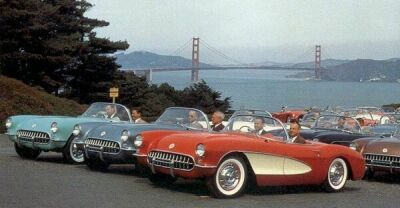

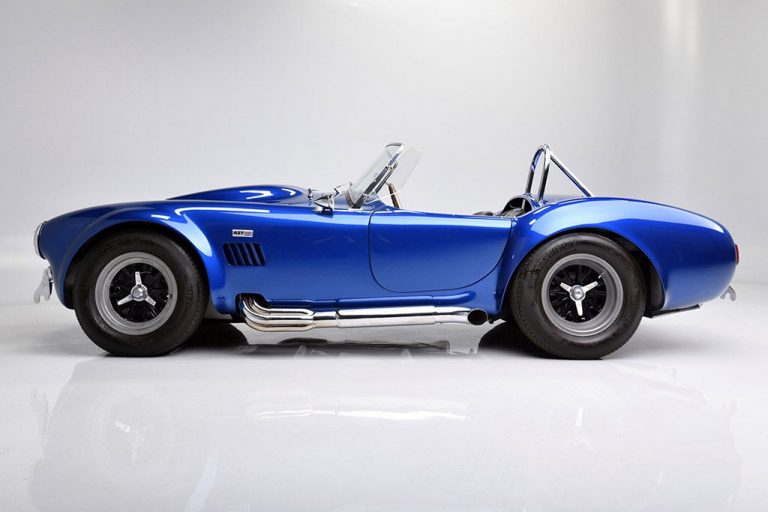

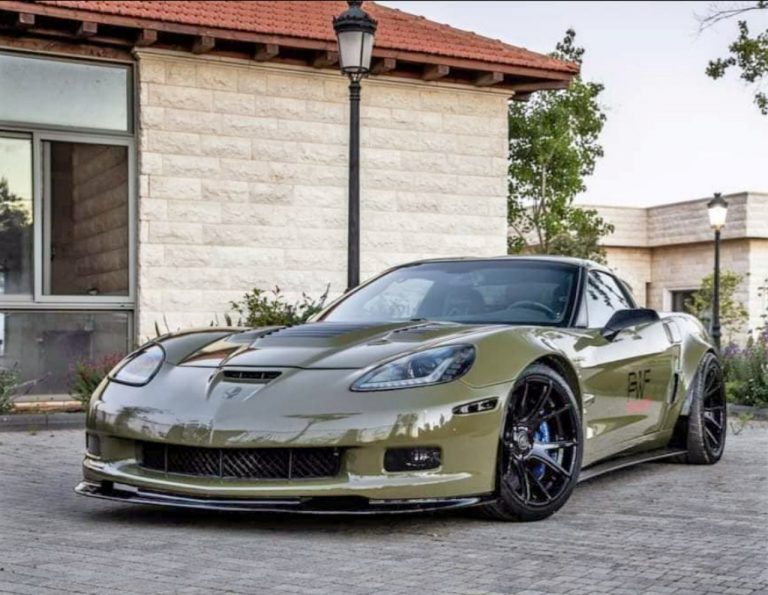
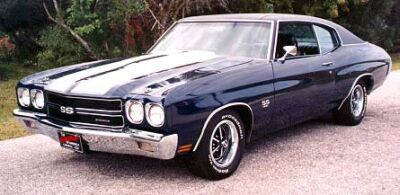
Would like to sell the engine in a Winnebago with only 26,000 miles on it. Give me a hint as to how I can get the message out
what year ,what HP. V8 MODEL SER No. where are you. SELLING THE VEHICLE ralphvistaair at gmail.com how much
Is it a 454 motor and do u still have it?
I have 1990 Chevy 454ss with 47,000 original miles and this helped a lot on where to start I’ll take any subjections on what should I do.
Hi,I hope you can solve a problem, I have a 2000 Chevy 3500 dually,I have a issue ,
I went to start the pickup after a run across town ran great no problems not hot a/C was working great got home parked the pickup came out Sunday morning changed oil,emission time oil little dirty but all oil no signs of contamination,tried to start and would not turn over?.last time it did this it was the starter?I think but when I did get it to turn over it sounded a little funny,I checked the radiator for water pushing out nothing all the things I did in my yrs behind the wrench just wasn’t adding up,I am at a total loss what am I missing.?
1993 454 Chevy. Starts right up Idles at 1000+/-. After a few minutes the idle goes to 1400+/- and the check engine light comes on and the motor dies. Hit the key and it starts. Hit the throttle and it will continue running.
We are restoring a 72 Monte Carlo some one put a 454 engine in it, the casting number is 361959.
The number engraved in the block is C8F186393, Hi Per PASS is also on the engine.
Above the timing chain cover is T0424TST.
We need to know the year, Horse power and any thing else you can help us with to get the right
timing chain, gaskets and filters to fit this engine. Thanks for any help you can provide.
Hi judy/WE..,same here,loving a 454/L19 into a 04 ram 🙂 ,hope this helps,
https://wowmusclecars.com/chevrolet-big-block-casting-no/
Hi everyone , I had a 71 Nova with a hi-performance 454 block , 396 crank , and 427 square port heads , Muncie rock crusher 4 speed , I loved that car it was a lot of fun to drive and it pulled like a train through all 4 gears . High and quick revenge through all 4 as well . Just an FYI for you .
My 1988 454 keeps getting gas in the oil what’s causing this locked up twice
I have a 55 Chevy 210 with a 454 engine in it. the number above the timing chain is T0316TSK. Can you tell me what year it is and the horse power rating is? I appreciate you. Thanks